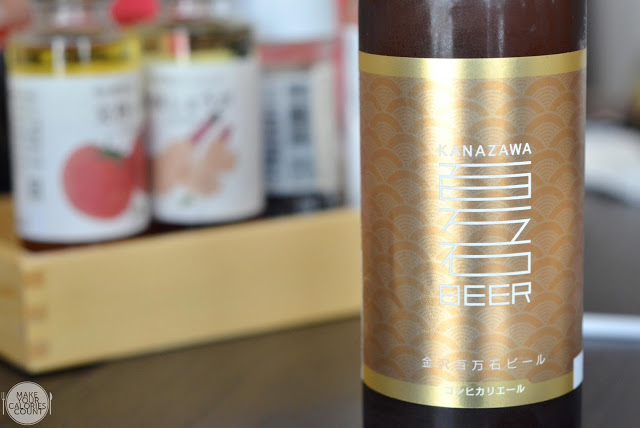 IPPIN Cafe Bar serves home-cooked style Japanese food with ongoing promotions such as 1-for-1 Kirin beer during happy hour.
IPPIN Cafe Bar serves home-cooked style Japanese food with ongoing promotions such as 1-for-1 Kirin beer during happy hour.

Photos by Chong Yap of Make Your Calories Count
Strolling along Mohamed Sultan Road always brings back fond memories of the past when the area was a popular hang-out for some drinks. Nowadays, the stretch of shophouses has transformed into an array of restaurants with a focus on Japanese cuisine such as Fuku who specialises in their puffer fish!
While most would be familiar with the commercial Japanese restaurants such as Ichiban, Sushi Tei or even some of the higher end establishments such as Aoki and Shinji, I would struggle to single out one place which serves home-cooked food. With that in mind, IPPIN Cafe Bar was started in October last year with the promise of bringing Singaporeans the Japanese home experience. After a chat with Chef Ayomi, we learnt that my favourite sashimi, chirashi-don or even tonkatsu sets are not quite really your day-to-day dining affair back home in Japan. Prior to coming over Singapore, Chef Ayomi used to coach culinary skills in Hong Kong for four years so there must have been a fair share of good home cooks being nurtured!
Quite frankly, I think we all grew accustomed to eating these or even your usual sushi and maki-rolls commonly found at most Japanese restaurants in Singapore, to the point where we naturally assumed that these are staple food for Japanese. That seems about fair since I am sure for most, our home-cooked food is not quite the same that you would enjoy at say Tung Lok or Crystal Jade.
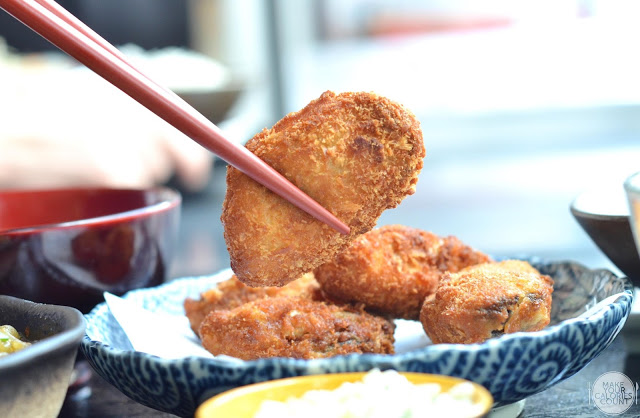 Above: Deep fried oyster set | S$24/-The gorgeous plush oysters are from Hiroshima Prefecture, which is the most famous area for oysters in Japan. Raised in clean ocean water, the oysters were extremely juicy and tasted fresh.
Above: Deep fried oyster set | S$24/-The gorgeous plush oysters are from Hiroshima Prefecture, which is the most famous area for oysters in Japan. Raised in clean ocean water, the oysters were extremely juicy and tasted fresh.
Lightly battered, this was a slightly different experience from the grilled rendition as the crispy texture on the surface complemented the soft and fresh oyster underneath the coating. It was also served with a homemade mayonnaise dip that saw a blend of diced egg white with bits of egg yolk to add richness to the oysters.
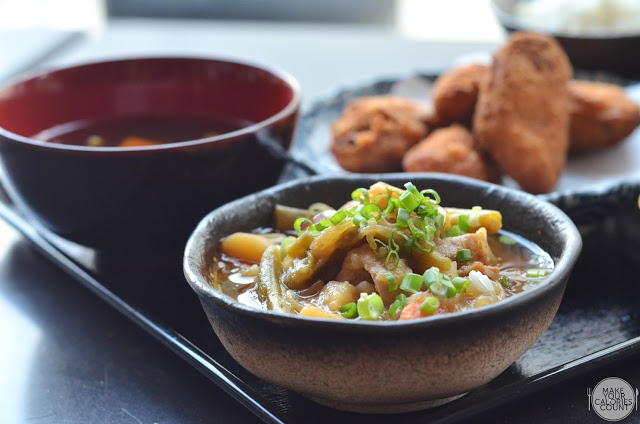
The Nikujaga pork and potato stew is a side that comes with either of the oyster sets. The rather savoury side saw a balanced blend of flavours, both sweet and salty that would have made it a lovely main standalone with a bowl of rice!
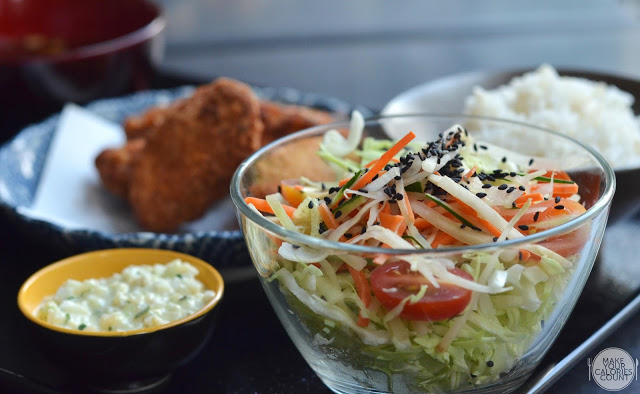
The salad side is also part of the set and with a few dressings to choose from such as tomato, ginger, kameya wasabi and even organic ponzu vinegar, that would certainly bring the sliced greens alive. What we enjoyed was the drizzle of black sesame seeds that added texture and fragrance to the otherwise plain salad shreds.

The set comes complete with a small side dish and also the Hojicha pudding which is a roasted green tea dessert. Brown in colour, hojicha is high in catechin and low in caffeine and tannin hence making it suitable for adults and kids alike!
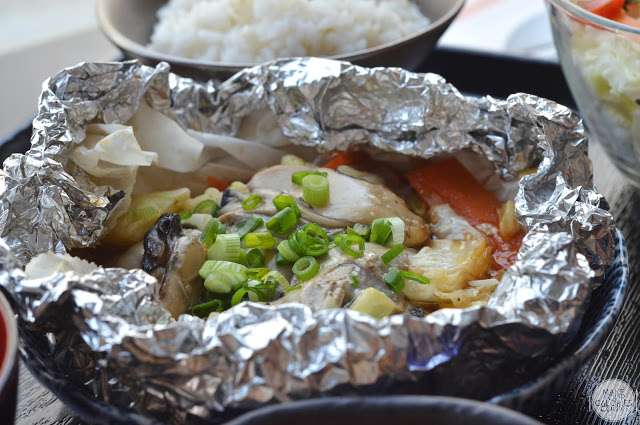 Grilled oyster & veggies in ponzu butter sauce | S$20/-
Grilled oyster & veggies in ponzu butter sauce | S$20/-
Like its deep-fried counterpart, these oysters were also well-cleaned with no hint of grittiness from sand and grilled in ponzu butter sauce, it delivered a satisfying balance in flavours that left each mouthful refreshing.
The set similarly comes complete with rice (blended with barley for extra nutrients such as Vitamin B), Hatcho miso soup, Nikujaga pork and potato stew, salad and the Houjicha pudding.
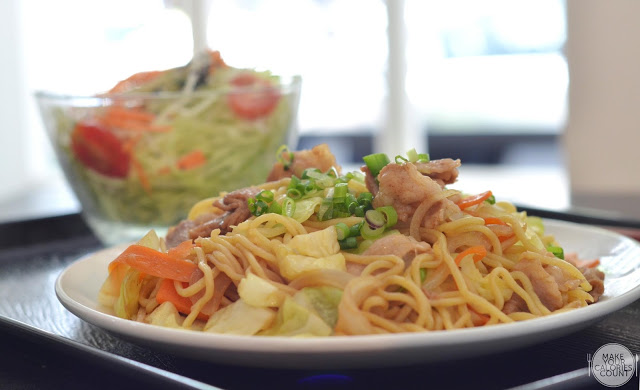 Yakisoba set | S$12/-
Yakisoba set | S$12/-
A simple dish that resembles our Chinese egg noodles, this Yakisoba is a Japanese daily food which actually originates from the owner dad's recipe. The key to the dish is the savoury sauce that imparts flavours consistently to the noodles. While it may seem quite a subtle dish for most, us included, it is arguably comfort food for most, not just Japanese!
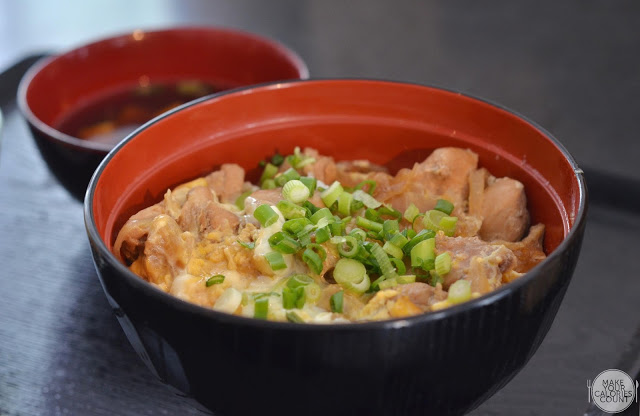 Oyakudon set | S$15/-A popular dish for most, the chicken and egg on rice dish was one of my favourite among the dishes tried. It was simple, homely and I would have no problems enjoying another bowl for lunch or dinner. The essence of the dish comes from the dashi (stock) which was used to boil the chicken with special efforts to ensure that the chicken remains succulent. While some may find it a little too wet, we later learnt that as the secret to the dish lies in the stock, it was meant to be enjoyed like a porridge so do scoop up some of that lovely dashi!
Oyakudon set | S$15/-A popular dish for most, the chicken and egg on rice dish was one of my favourite among the dishes tried. It was simple, homely and I would have no problems enjoying another bowl for lunch or dinner. The essence of the dish comes from the dashi (stock) which was used to boil the chicken with special efforts to ensure that the chicken remains succulent. While some may find it a little too wet, we later learnt that as the secret to the dish lies in the stock, it was meant to be enjoyed like a porridge so do scoop up some of that lovely dashi!





